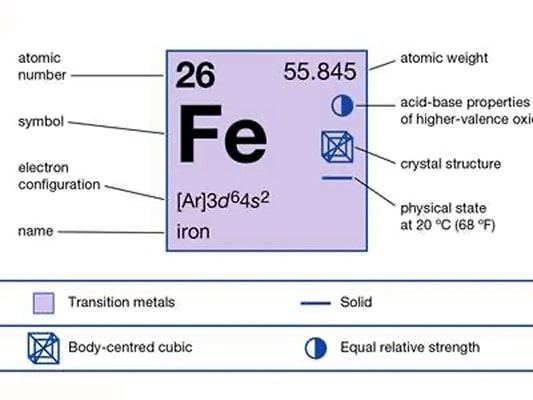Converting Ferrous (Fe+2) (soluble) iron to Ferric (Fe+3) (Particulate/Solid form).
The iron must first be exposed to air or an oxidizing agent. Aeration System is the most cost-effective method to oxidize ferrous iron for its removal from water. In many areas around the globe, municipal and industrial operations need to remove naturally occurring iron (Fe) from the water to prevent damage to other equipment and improve water quality. Removing iron from the water must first be oxidized using the most widely accepted and cost-effective method called aeration. The aeration process changes the iron from its Ferrous (Fe+2) state (soluble) to ferric (Fe+3) colloidal participation. Did you know that Iron occurs naturally and is found in the earth’s crust? It occurs in both groundwater as well as surface waters and is not known to cause any harmful effects on humans or animals.
Iron does cause problems, though, for municipal facilities and their customers by impacting laundry operations and causing stains on buildings and on plumbing fixtures. Iron also promotes and facilitates the growth of iron bacteria in water, creating a problem for distribution lines and piping systems. Once the lines become blocked, this impacts the ability to distribute water to the customer. Iron bacteria also become detectible even at low concentrations and impact the taste of the water. The U.S. Public Health Service Drinking Water Standard set a recommended maximum level of 0.3 mg/L in public water supplies.
In industrial applications, iron can cause server damage in boiler systems.
Cation and Anion systems, piping and nozzles, and other equipment. In addition, for other industries such as food and beverage, brewery, semiconductor, or the production of chemical products, iron can interfere with the manufacturing or brewing and canning process, lowering the quality of the final product. In groundwater and anaerobic surface water, iron is normally present in its soluble form called “Ferrous” iron Fe+2 when the pH is in a certain range. When the same water is in contact with air, that allows the air to diffuse into the water, or when any form of an oxidizing chemical is added to the water, the iron is converted into its oxidized form called “Ferric” Fe+3, becoming a solid. The ferric iron becomes visible and impacts the turbidity of the water and is typically not accepted by customers because the ferric iron within the water when in contact with surfaces, will create colloidal precipitates causing discoloring to all that it encounters over time.





